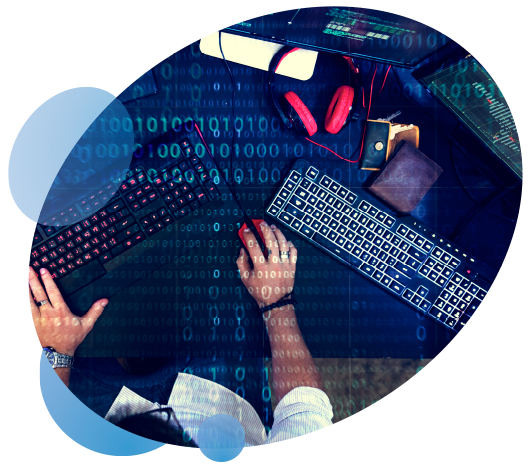The realities of COVID-19 have hit us all hard. From travel restrictions to business lockdowns, our lives look very different to the everyday from a few months ago.
One of the new realities facing many Australians is the concept of suddenly working from home. While working in your PJs sounds like an easy dream, the reality is more complicated.
Video conferences, internet connectivity, device configuration, security, incompatibility and other IT hurdles are plentiful … but they needn’t be a inescapable.
From our work involving fielding general enquiries, resolving client issues and tracking the trends more broadly, there are three overwhelmingly common IT limitations of working from home:
- BYO devices
- Internet connectivity
- Device configuration.
This article takes a look at what’s going on and how you can respond.
1. BYO devices
“BYO devices” (or BYOD) refers to any IT equipment you use that was not provided by your employer. In terms of working from home, this might mean using your personal laptop or desktop in place of a work computer. A reliance on BYOD can have a number of drawbacks.
Most importantly, they’re often not as secure as a commercial device. Many businesses invest in reliable antivirus protection and have procedures in place to help mitigate the risk of exposure.
Cymax General Manager Kylli Kidman explains that personal devices often don’t have this protection, leaving potentially sensitive business data at risk.
“Personal devices can be a backdoor into the commercial systems they’re connected to,” Sean says.
The ramifications of using a vulnerable BYO device are serious. As well as risking both personally and commercially sensitive data, there’s also the cost of fixing the device following a mishap.
Cymax’s advice? Always use hardware and procedures provided by or supported by your employer or their managed IT services firm. Some endpoint security licenses are per named user thus allowing installation on multiple devices for the same user (and price).
2. Internet connectivity
With a very large proportion of Australia’s office-based workforce now working from home, the internet landscape has changed significantly.
Private ISP services are now having to handle the demands of wider commercial use. This can lead to frustration on all sides as home connections struggle with constant load.
If you’re experiencing slow internet connectivity, it’s often because your home plan with your ISP doesn’t offer a big enough “pipe”.
“When you’re in an office, there’s more data to go around,” Kylli explains. “People at home with 1 or 2 or 3 children and plus a partner, and all using up bandwidth for non-business purposes – like video games and Netflix … it can easily cause sluggish connection speeds.”
In the case of slow connectivity, Cymax recommends talking to your ISP. If you plan to be working from home consistently, it’s a good idea to up your home plan to help handle your increased use. Don’t worry, the extra cost is almost always a straight-up tax write-off.
If in doubt, check your internet connectivity speed at www.speedtest.net
3. Device configuration
We live in a multi-platform world. This is great for those of us on the go: we can simply pull out our phone or tablet and stay connected both professionally and privately. But it comes with some challenges.
The more devices you work on, the more devices you have to configure and align to ensure they’re doing their job and talking to each other. This can regularly take hours out of a working week if you’re not careful.
Using only work-supplied devices is one way to keep this process simple. Businesses often have procedures and plans in place to keep their hardware secure, patched and running smoothly.
You should also ensure all your devices are up to date – this means installing security patches when prompted and ensuring your software is the latest version.
And if you are working BYOD, then ask your employer for some tech support.
Yes, if in doubt, ask an expert
There’s no substitution for the expertise of a professional. Here at Cymax we know IT and we make it our business to ensure IT mishaps don’t become major headaches for our clients.
“Many of our clients have been with us for a long time,” Kylli says.
“If they have themselves in a tangle, we can help unweave that knot. We do, however, work very hard to help them avoid the knots in the first place. Every good managed IT services company should be doing that proactively.”
The best thing you can do for your IT is to keep a professional in the loop.
“It’s far easier for us to mitigate a problem than it is to deal with the fallout of a failed solution. We can advise you how to do things properly the first time so you don’t have to spend time and effort fixing a major mistake.”
Working from home needn’t be a headache
Working from home is the new normal for many Australians. Like any major change, it can come with its share of problems.
IT issues, especially, can disrupt even the most tech-savvy worker. This article has reviewed the three major IT issues we’re seeing as we advise new clients about working from home. These are likely to be the same sorts of issues you and your staff are facing.
And if you are dealing with these issues, we’re here to help. Cymax is one of Brisbane’s leading IT service providers.
City-wide and beyond, there’s no IT problem too big or too small for us to handle. Get in touch today to learn how we can help.


